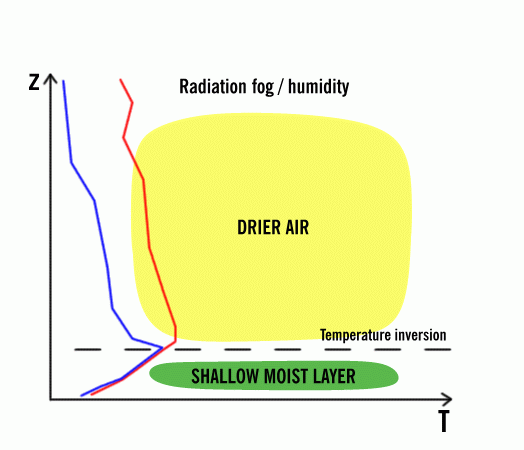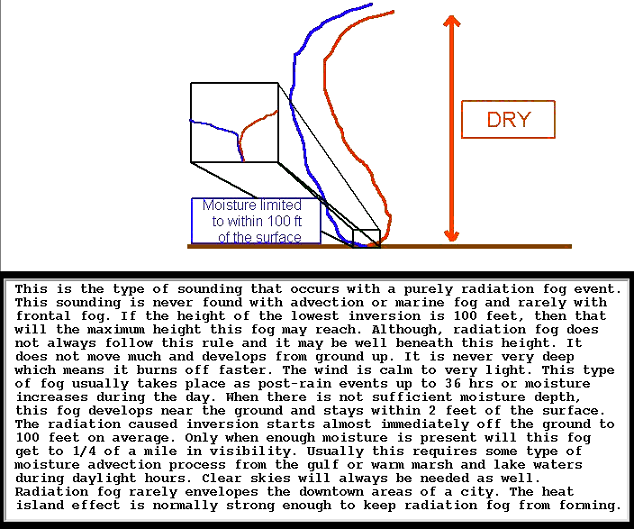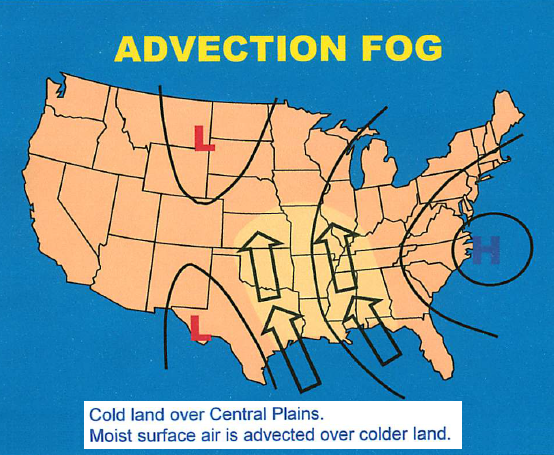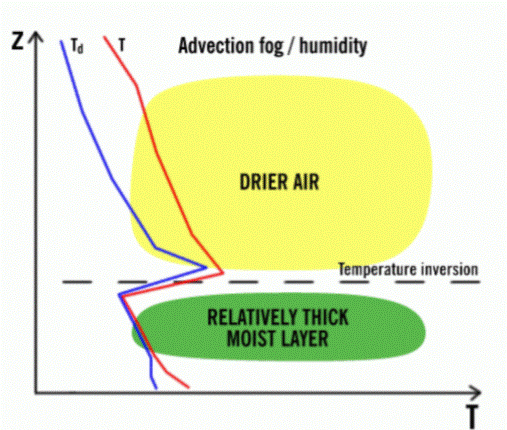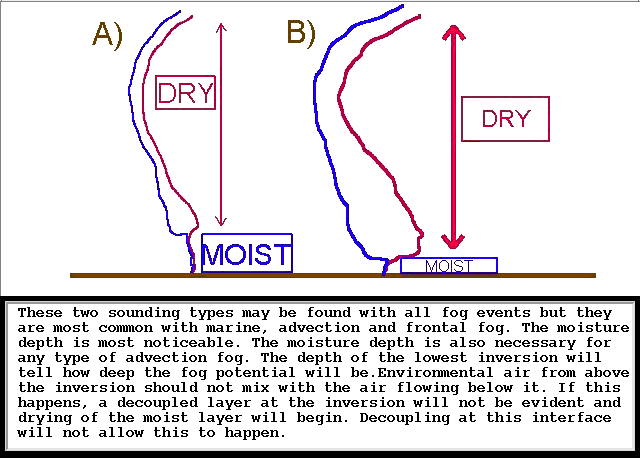| RADIATION FOG INGREDIENTS |
theweatherprediction.com
The prime time ingredients for radiation fog are saturated soil, light wind, initially clear skies, and a low afternoon dewpoint depression. The more factors that are present, the more likely the fog will be. Saturated soils continuously evaporate moisture into the air, insuring the dewpoint depression (difference between temperature and dewpoint) will remain low. Light wind reduces the amount of mixing of air in the PBL. If winds are light, moisture evaporating from the surface will remain near the surface and not mix with drier air aloft. If wind is calm, expect fog to be very close to the ground or non-existent. In a calm situation with a low dewpoint depression and moist soils, expect a thick dew or frost instead of radiation fog.
Clear skies allow the maximum amount of longwave radiation to leave the earth. The absence of clouds will prevent any of the radiation from being trapped between the cloud and the ground. The more temperatures cool, the quicker the temperature will reach the dewpoint. A low dewpoint depression can occur by adding moisture to the air while at the same time cooling the air. The best way to rapidly decrease the dewpoint depression is for it to rain. An afternoon rain increases the likelihood of overnight fog dramatically. The afternoon rain saturates the soil and reduces the afternoon dewpoint depression. If skies begin to clear at night and winds are from 5 and 10 miles per hour after rain occurred the preceding day, fog is extremely likely. Other processes can produce fog such as upslope flow and contact cooling.
Radiation fog will dissipate from daytime heating. This is due to surface air warming by conduction and becoming unsaturated. Radiation fog usually dissipates by mid-morning.

